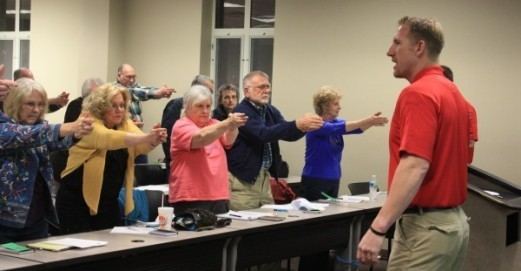Founded December 7, 1866 Congressional district 4th Website www.etowahcounty.org Population 103,931 (2013) | Area 1,422 km² | |
 | ||
University Gadsden State Community College Rivers Coosa River, Big Wills Creek Points of interest Noccalula Falls Park, Noccalula Falls Park & Campg, Imagination Place, Gadsden Museum of Art, Wills Creek Winery | ||
Clark hall law gadsden al attorney in etowah county alabama
Etowah County is a county of the U.S. state of Alabama. As of the 2010 census the population was 104,430. Its county seat is Gadsden. Its name is from a Cherokee word meaning "edible tree". In total area, it is the smallest county in Alabama, but one of the most densely populated.
Contents
- Clark hall law gadsden al attorney in etowah county alabama
- Map of Etowah County AL USA
- Help etowah county alabama traffic speeding ticket lawyer best etowah county al traffic attorney
- History
- Geography
- Adjacent counties
- Rail
- Demographics
- 2010 census
- Cities
- Towns
- Unincorporated communities
- References
Map of Etowah County, AL, USA
Etowah County comprises the Gadsden, AL Metropolitan Statistical Area.
Help etowah county alabama traffic speeding ticket lawyer best etowah county al traffic attorney
History
Etowah was originally the southern part of [[DeKalb & Cherokee County, Alabama|DeKalb County]]. It was separated and established as Baine County on December 7, 1866, by the first postwar legislature, named for General David W. Baine of the Confederate Army. The county seat was designated as Gadsden.
Because of postwar tensions and actions against freedmen, a state constitutional convention was called in 1868. During it, this new county was abolished, replaced on December 1, 1868 by one aligned to the same boundaries and named Etowah County, from a Cherokee language word. Most of the Cherokee had been removed in the 1830s to Indian Territory west of the Mississippi River.
An F4 tornado struck here on Palm Sunday March 27, 1994. It destroyed Piedmont's Goshen United Methodist Church twelve minutes after the National Weather Service of Birmingham issued a tornado warning for northern Calhoun, southeastern Etowah, and southern Cherokee counties.
Geography
According to the U.S. Census Bureau, the county has a total area of 549 square miles (1,420 km2), of which 535 square miles (1,390 km2) is land and 14 square miles (36 km2) (2.5%) is water. It is the smallest county by area in Alabama.
Adjacent counties
Rail
Demographics
As of the census of 2000, there were 103,459 people, 41,615 households, and 29,463 families residing in the county. The population density was 193 people per square mile (75/km2). There were 45,959 housing units at an average density of 86 per square mile (33/km2). The racial makeup of the county was 82.87% White, 14.68% Black or African American, 0.33% Native American, 0.42% Asian, 0.03% Pacific Islander, 0.73% from other races, and 0.93% from two or more races. 1.70% of the population were Hispanic or Latino of any race.
There were 41,615 households out of which 29.90% had children under the age of 18 living with them, 54.20% were married couples living together, 13.10% had a female householder with no husband present, and 29.20% were non-families. 26.30% of all households were made up of individuals and 12.40% had someone living alone who was 65 years of age or older. The average household size was 2.44 and the average family size was 2.93.
In the county, the population was spread out with 23.80% under the age of 18, 8.70% from 18 to 24, 27.40% from 25 to 44, 24.10% from 45 to 64, and 16.00% who were 65 years of age or older. The median age was 38 years. For every 100 females there were 91.80 males. For every 100 females age 18 and over, there were 87.90 males.
The median income for a household in the county was $31,170, and the median income for a family was $38,697. Males had a median income of $31,610 versus $21,346 for females. The per capita income for the county was $16,783. About 12.30% of families and 15.70% of the population were below the poverty line, including 21.60% of those under age 18 and 13.70% of those age 65 or over.
2010 census
As of the census of 2010, there were 104,430 people, 42,036 households, and 28,708 families residing in the county. The population density was 195 people per square mile (75/km2). There were 47,454 housing units at an average density of 86 per square mile (33/km2). The racial makeup of the county was 80.3% White, 15.1% Black or African American, 0.4% Native American, 0.6% Asian, 0.2% Pacific Islander, 1.9% from other races, and 1.5% from two or more races. 3.3% of the population were Hispanic or Latino of any race.
There were 42,036 households out of which 27.1% had children under the age of 18 living with them, 49.3% were married couples living together, 14.3% had a female householder with no husband present, and 31.7% were non-families. 28.1% of all households were made up of individuals and 11.9% had someone living alone who was 65 years of age or older. The average household size was 2.43 and the average family size was 2.97.
In the county, the population was spread out with 23.0% under the age of 18, 8.5% from 18 to 24, 24.9% from 25 to 44, 27.8% from 45 to 64, and 15.8% who were 65 years of age or older. The median age was 40.2 years. For every 100 females there were 94.1 males. For every 100 females age 18 and over, there were 96.5 males.
The median income for a household in the county was $36,422, and the median income for a family was $44,706. Males had a median income of $39,814 versus $30,220 for females. The per capita income for the county was $20,439. About 13.1% of families and 16.8% of the population were below the poverty line, including 24.6% of those under age 18 and 11.2% of those age 65 or over.
